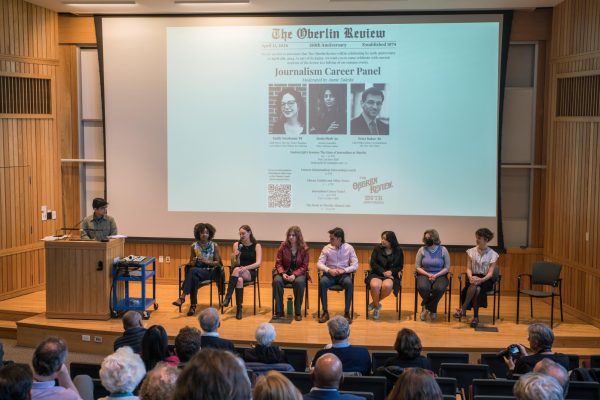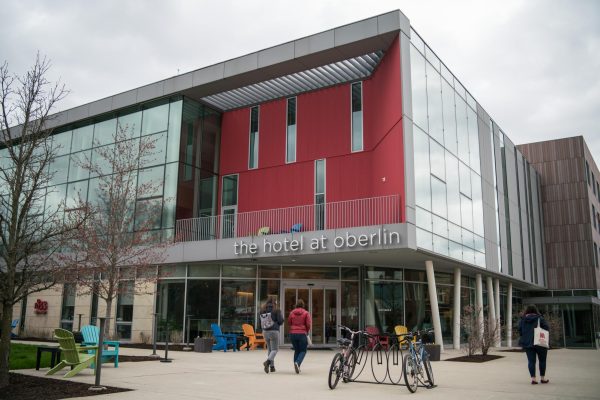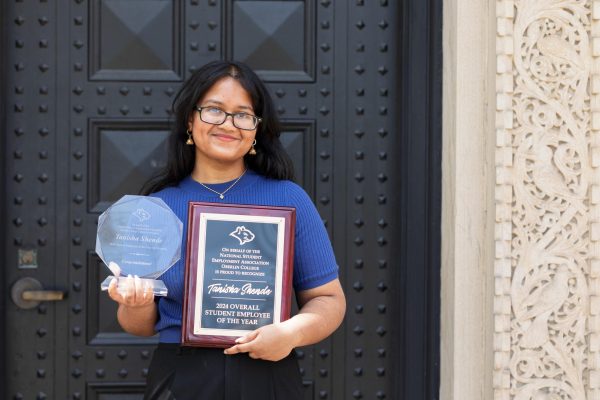Professor Rick Baldoz Discusses Anti-Asian Violence in Washington Post Op-ed
Rick Baldoz
Editor’s Note: This interview contains mention of anti-Asian hate and violence.
Following the series of shootings in Atlanta on March 16 that primarily targeted Asian women, Rick Baldoz, professor of Comparative American Studies and chair of the Sociology Department, wrote an op-ed in The Washington Post about the shooting and the history of anti-Asian violence in the U.S. Baldoz’s work, including his 2011 book, The Third Asiatic Invasion: Empire and Migration in Filipino America 1898-1946, focuses on Asian immigration. The Review spoke with him this week about his March 26 op-ed.
This interview has been edited for length and clarity.
How did you get the inspiration to write the piece? Did you have the structure of this piece in mind right after the events or did you take a few days before writing?
My research is in the area of Asian immigration with a sort of subspecialization in anti-Asian violence, specifically about Filipino immigrants in the U.S. during the 1920s and ’30s. So it’s a topic I’ve spent a lot of time thinking about over the years and wrote a book that addresses some of these topics. In terms of the specifics of the op-ed — this really big event happened, there’s a lot of news coverage of the event, and then relatively quickly, a lot of think pieces, about how to make sense of this tragedy. Probably a day after, I started thinking about, “What can I add to this discussion?”
In my op-ed, the angle is about how these kinds of incidents of violence are explained as acts of self-defense even though clearly they’re offensive acts. I wanted to talk about how there’s this long history of vigilante violence directed at minority groups, where the people doing the violence scapegoat the victims of the violence. “They did something to provoke us, so our violence is justified, right?” And it’s often framed as self-defense — “We were defending the community against the communists subversives or against Chinese prostitutes who were debasing the white families by luring men.” And that was [said] in the 19th century and early 20th century in Chinatown in San Francisco — a lot of the social reformers would condemn Chinatown for being these vice districts and would talk about prostitution and opium and how we’re manipulated by these “evil immigrants” to engage in bad behavior.
As you were writing, new information was coming out in real time. Did that affect your process or structure?
Yeah. So, the event happened, and I heard about it that night and paid attention to the basic news information that we had. The next day I saw the stuff about the sheriff’s office and their comments, and then within a day of that, the sheriff’s office was saying it was misconstrued. So I watched the news conference online a few different times to make sure I understood the intent. I found the glibness of the sheriff, who was the spokesman, to be kind of jarring to the fact that [the killer] had a “bad day” and he snapped, and this is what happened. There was just almost no sense of empathy for the victims. It just seemed really bizarre, and then of course we learned that that same sheriff posted [anti-Asian content] on Facebook, suggesting perhaps that he wasn’t impartial. You don’t want to jump in too quickly before you know as many of the facts as possible, so you gather the information that’s available, you see sometimes the contestation where there’s an accusation, the sheriff’s department’s overstepping and then them denying it and then you have to go make sure you understand what exactly was said.
Was there anything that you wanted to talk about but couldn’t fit into the article?
So 48 hours after the initial incident, President [Joe] Biden made a set of comments. He said it was un-American, and then a day later [Vice President] Harris and Biden went to Atlanta. A part of my writing was trying to figure out how to incorporate their denunciation of the events and going to visit the Asian community in Atlanta and some of the families. In the original article, I had a few examples of violence against other communities of color historically, and how those were also framed as defensive versus offensive. But ultimately this was about the particular incident that was targeting Asians. I had examples about Japanese people being targeted, examples about South Asians being targeted.
Someone might be able to say, “Well, you didn’t talk about this and you didn’t talk about that,” which is a very common critique of an op-ed. But you can’t do that in 800 words. It’s really difficult, so I guess ultimately you just have to learn to let go and know that you can’t write the definitive in this format — a definitive take on the history and present of anti-Asian violence or these kinds of different stereotypes about Asians. You can only have one hook, which in my case was about the framing of vigilante violence as defensive and having a few examples of how that played out historically and how it links to the current incident.
Was there anything else you wanted to say?
I think it’s important that scholars who are in a position to engage with the public do so, especially in times of kind of collective crisis about anti-Asian violence. Professor [Shelley] Lee in Comparative American Studies and myself have both been out there trying to engage with the issue and share our expertise and help this Oberlin community understand the issues at hand, as well as to use our expertise as a way to show the outside world that Oberlin is engaged in these issues. Faculty and students, we had this teach-in last week, and there’s been a series of other events as well. So you know, it’s just nice to be able to put Oberlin on the map for making a kind of positive contribution to the discourse.





